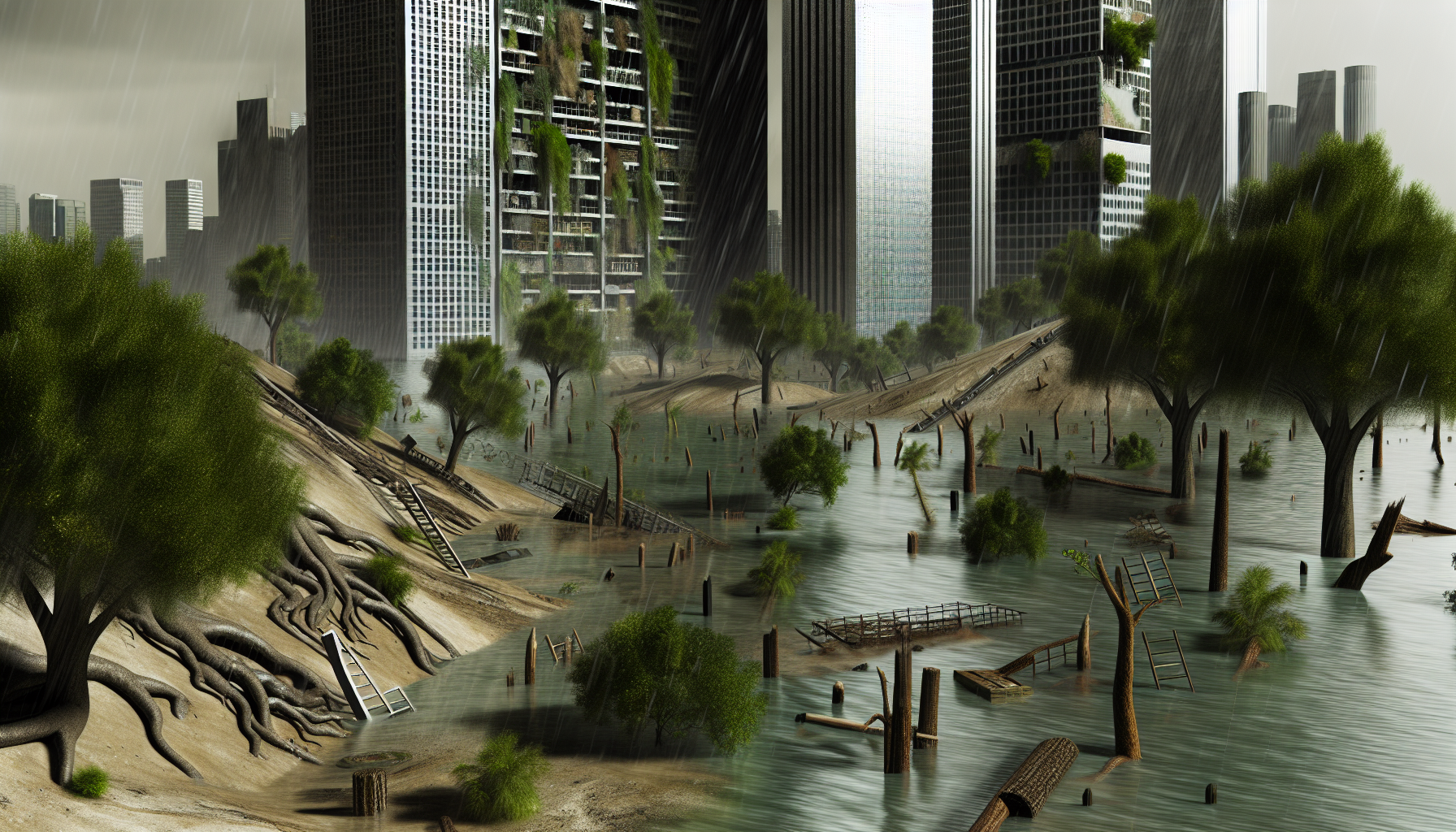The unwavering hand of climate change has ungently sculpted a world unfamiliar to those who came before us. Once vibrant cities, which thrived alongside the green canopies, now gasp for breath as they lie in the chokehold of rising waters. As cities submerge, street by street, the silent voices of urban forests stir the waters, questioning their fate – Can Urban Forests Survive the Deluge?
Our metropolises were once bedecked with lush urban forests, standing as monuments to human ingenuity, intertwining nature within concrete mazes. But as the relentless tide rises, these bastions of biodiversity face a deluge of existential threats that could see them washed away in the wake of our environmental apathy.
Recent studies from prominent environmental researchers have painted a grim picture of the future. With sea levels projected to rise by up to two feet within the next century, urban forests are expected to drown under the pressure. Saltwater intrusion compromises soil health and root systems, and frequent storm surges turn once fertile ground into barren wastelands, leaving habitats in peril.
However, amidst the slow submersion, there lies a burgeoning movement of urban resilience – architects and planners across the globe have been working tirelessly on adaptation strategies. Elevating parks, erecting sea walls, and designing salt-tolerant green spaces are all inventive means to stem the tide. But can these efforts keep pace with the climate crisis?
‘Our urban green spaces are in a race against time,’ notes Dr. Helena Birch, a climatologist who specializes in urban environments. ‘Mitigation is no longer enough. We must adapt swiftly and creatively if we hope to save these vital ecosystems.’
The survival of urban forests is not merely an ecological whim – it is integral to our own existence. They act as lungs to our cities, inhaling carbon dioxide and breathing out life-giving oxygen. Their roots clutch the earth, guarding us against the erosive forces of storm surges. Their canopies offer respite to the flaring temperatures wrought by urban heat islands.
Cities, like the tattered Venice of our new age, show us that the end game is not a future scenario but a present catastrophe. Action must be taken now, for it is not merely the survival of urban forests at stake but the legacy of human civilization.
The question remains – as the floodwaters rise and wildlife scatters, where will this leave the lower-income communities who depend on urban green spaces for food, shelter, and employment? With environmental justice becoming more prevalent in these dialogues, the intersection of socio-economic status and environmental degradation cannot be ignored.
In the end, perhaps our urban forests are yet another casualty to humanity’s grand narrative, with each fallen tree echoing the losses that compile in the annals of our time. But let this not be a call to inaction. The plight of these silent sentinels must awaken in us a determination to adapt, persist, and overcome. For they do not merely represent a battle against rising waters, but a war for a world that future generations deserve to inherit.
Engagement, action, and awareness. These are the armaments we must bear in the face of the deluge. Without them, urban forests—and everything they symbolize—may be remembered only in the sodden pages of history, as relics of a world that could have been.
